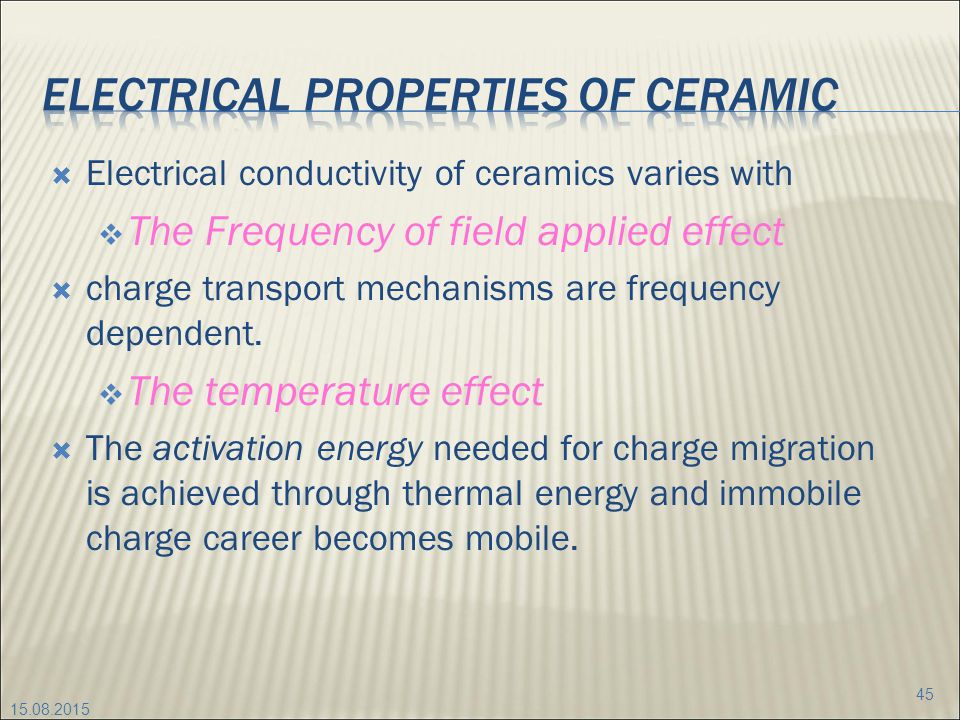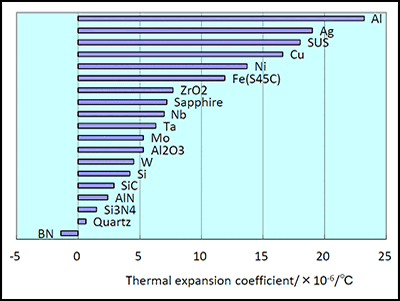15 7 implications of cyclic fatigue in design of ceramics 301 problems 301 16 thermal stress and thermal shock in ceramics 303 16 1 introduction 303 16 2 magnitude of thermal stresses 304 16 3 figure of merit for various thermal stress conditions 304 16 4 crack propagation under thermal stress 306 problems 313 17 fractography 317 17 1.
Thermal properties of ceramics pdf.
Properties of ceramic materials.
Learning objectives applications and processing of polymers.
Ceramic material s retain their properties at elevated temperatures due to the strong ionic covalent bonding.
Thermal expansion is due to conduction of heat.
Of soda lime silica glass 45.
Melting points high 600 4000c thermal conductivities are low insulators thermal expansion values are low 1 15 ppm c 3.
Learning objectives applications and processing of ceramics.
Alternative ceramic top coat materials sections.
Wachtman jr by symposium on mechanical and thermal properties of ceramics gaithersburg md 1968.
B 1928 joint author.
In this work the dielectric ferroelectric polarization versus electric field and piezoelectric properties of pzt 4 pzt 5a pzt 5h and plzt 9 65 35 were measured over a temperature.
Ysz ceramic top coat properties a good thermal stability a low thermal conductivity a high coefficient of thermal expansion cte in combi nation with a high fracture toughness are the main required properties for the ceramic top coat on top of metallic components.
Corrosion and degradation of materials.
L excellent thermal stability and insulation properties l free of binder or lubricant l low thermal conductivity l good resistance to tearing.
National bureau of standards.
Properties of pzt based piezoelectric ceramics between 150 and 250 c the properties of three pzt based piezoelectric ceramics and one plzt electrostrictive ceramic were measured as a function of temperature.
Rs of fused silica rs.
Proceedings edited by j.
Ssic a sic ssic with graphite sisic si infiltr.
Mechanical and thermal properties of ceramics.
Mass properties e g density ceramics are intermediate density 2 00 6 00 gms cm3 different for allotropes e g glass cristobalite tridymite quartz 2.
Major thermal properties of ceramics are.
On heating ceramics expand this is generally known as thermal expansion.
Al 2 o 3.
Thermal shock is very high despite of low ductility e g.
Ceramics working at high temperature are called refractory ceramic materials.
Thermal ceramics superwool fibre patented technology is available in a variety of forms including blanket bulk board felt paper vacuum formed modules and mastic products.
Applications and processing of polymers.
From this we know that ceramics conduct heat but withstand high temperature.
Learning objectives corrosion and degradation of materials.








